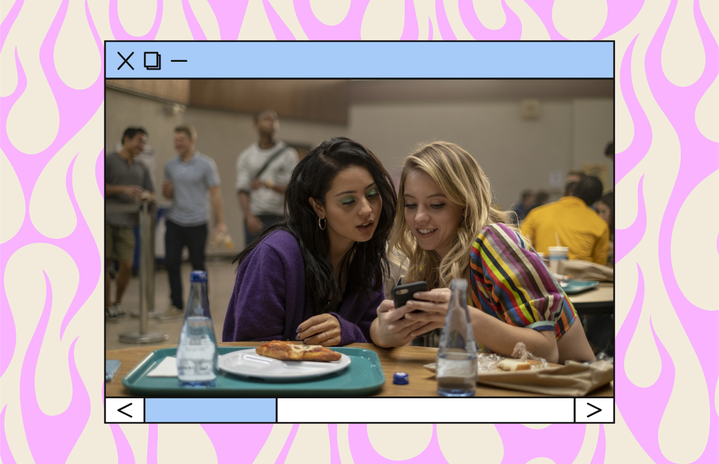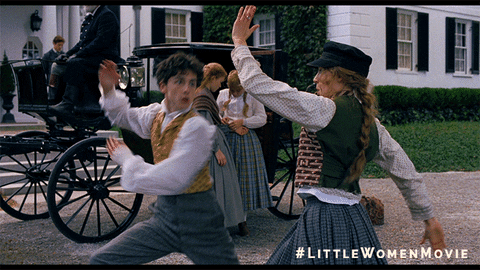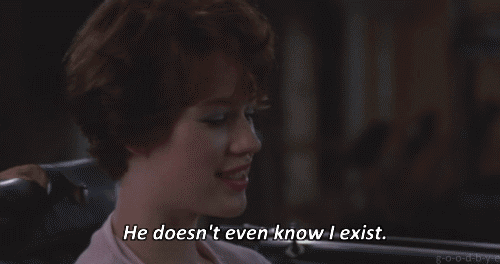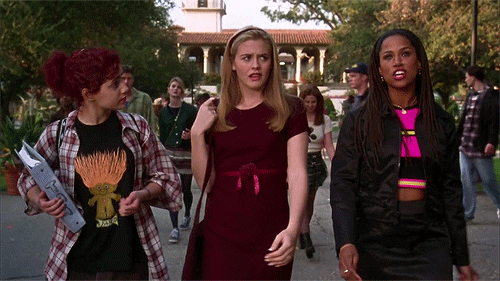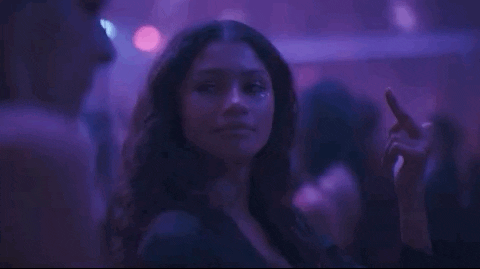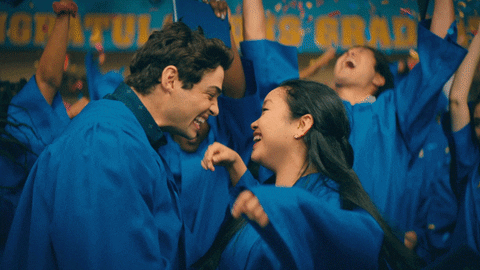In recent years, the teen genre has started to become looked at more critically. Now, by critically, I don’t mean ridicule, it has always and probably will always be somewhat ridiculed. What I mean is that the lens has changed. We are looking at it less for its fun-ness and more for how impactful it is. This change in the lens is long overdue. The teen genre and coming-of-age genre have existed for centuries and should have been looked at through a more intellectual lens from its inception. But late is better than never.
Now, it’s not like viewing teenagers and young adults in media with intellectualism is brand new. Literature like Romeo & Juliet, Little Women, and Emma has proven the contrary. These texts have been dissected many times over by some of the most talented and brilliant minds in the English-speaking world. The teens in these stories deal with very mature topics, almost always being marriage. That may have been realistic during these times, but that’s not generationally relatable. This adult-focused subject matter is part of the reason they have been viewed more intellectually than John Hughes films or 2000s zeitgeisty TV shows, until now.
The films of the 1950s showed the first wave of teen-centric content through films like Rebel Without A Cause, The Blackboard Jungle, The Delinquents, A Summer Place, Splendor In The Grass and National Velvet (although this film was from the 40s). The teen idols of the time (and probably the first teen idols ever) were Elizabeth Taylor, Judy Garland, Natalie Wood, James Dean, Mickey Rooney, Sandra Dee and Warren Beatty, with almost all of them going on to become Old Hollywood icons that are still beloved today (and in Beatty’s case, becoming a living legend. He was the presenter during the La La Land—Moonlight mishap at the Oscars). Wood and Dean became symbols of the 1950s teen rebellion craze in cinema. There were almost zero teen dramas on TV due to the newness and acuteness of television at this time.
Teen content was still created in the 60s, but not within a specific theme like in the 50s. It was very sporadic, and two of the most famous teen films from this time were book adaptations like the first adaptation of Romeo & Juliet and the first adaptation of Lolita. There was also some college content through films like Where The Boys Are. The most famous teen film during this time was the first Parent Trap, which got remade in the 2000s, with the film becoming the most iconic iteration. There was also Bye Bye Birdie, which is now a musical done in high schools all over the country.
The one subgenre of teen film that was at an all-time high was the teen beach movie, which yes, got a parody film literally called Teen Beach Movie, which Disney later franchised, in the 2010s. The 1960s examples of these films are How To Stuff A Wild Bikini, Bikini Beach, Beach Party and Beach Blanket Bingo (frankly, the titles speak for themselves). Teen TV was also pretty sparse with Bewitched, Gilligan’s Island, The Addams’ Family, I Dreamed A Jeanie and Family Affair being most of the TV content teens fawned over. The Archies, an animated TV series based on Archie Comics (the first one ever), was the only teen-focused TV show out there. There was, of course, Soul Train and American Bandstand, which were Hairspray-esque teen-centric dance shows that were some of the first kids of reality TV shows. And their target demographic? Teens & young adults!
While teen movies remained at the same level quantity-wise in the 1970s, their quality and iconicism of them certainly increased. The 70s got Carrie (1976), American Graffiti, and Grease, which are some of the most iconic teen movies of all time. Teen-centric TV content in the 70s was pretty sparse as well with Happy Days, The Brady Bunch and The Partridge Family and The Facts of Life, with the latter remaining a beloved TV show and still very iconic as it was referenced in a lot of imagery for the band Weezer. However, there is something much of the teen content has in common in the 70s, that it all went back to the 50s (keep in mind, this is before Marty McFly did it in 1985’s Back To The Future). Grease, Happy Days and American Graffiti all take place in the days of sockhops and jukeboxes.
While I don’t think this was a conscious effort, it was certainly very telling of Hollywood’s opinions on teen content, which is that it can only work in the context of the 50s. After all, this genre and time period introduced legends. And in the 70s, teen idols like John Travolta, Olivia Newton-John, Henry Winkler and Ron Howard were all cemented as household names due to their work in 1950s period work (with David Cassidy and Maureen McCormick being exceptions). Hollywood overall was in a rut during this time, with The Godfather literally saving Paramount Pictures from closing. So, they are going back to a tried-and-true format which provided not just the business of Hollywood, but also the audience with comfort and security, although audiences were itching for something new and refreshing, especially the teen demographic.
Ask literally anyone with some knowledge of teen movies and they’ll say that the 80s were the era of the teen movie. John Hughes made a name for himself within the genre as the director for the coming-of-age film with movies like The Breakfast Club, Some Kind of Wonderful, Pretty In Pink, Ferris Bueller’s Day Off, Weird Science and Sixteen Candles. He was even paid tribute to in an episode of the 2000s teen drama One Tree Hill, because he was that impactful and influential on the genre. Without him taking the time to understand the complexities of the teenage mind and caring enough to tell stories about growing up and adolescence, there would not be the volume of teen content we have today. He made the teen genre an official thing.
Cameron Crowe and Amy Heckerling developed Fast Times At Ridgemont High two years before Hughes’ directorial debut in the teen film Sixteen Candles. They both went on to also become iconic directors of the genre with Crowe developing Say Anything and Heckerling developing Clueless and directing episodes of Gossip Girl. Chris Columbus made his directorial debut in Adventures In Babysitting (which was remade by Disney Channel and became the 100th Disney Channel Original Movie or DCOM), as well as working on teen-centric films Gremlins and The Goonies. He also directed the first two Harry Potter films, produced the third, and collaborated with Hughes on the Home Alone franchise.
There was Risky Business and The Outsiders (based on the teen novel by S. E. Hinton), which made Tom Cruise a teen idol way before he was an action star. There was Karate Kid which recently was just made into a reboot series by Netflix called Cobra Kai. Without Bill and Ted’s Excellent Adventure, there wouldn’t have been Dazed and Confused. Heathers walked so Scream, Jennifer’s Body and Jawbreaker could run. Risky Business is just one of the many teen films shot in Chicago, with the most obvious being Ferris Bueller, but also Hughes’ The Breakfast Club and Sixteen Candles and Columbus’ Adventures In Babysitting were also filmed in The Windy City (why do you think Stranger Things chose Chicago for Eleven to visits? You can even see the iconic angled building from Adventures In Babysitting in one of the shots from that controversial episode). Footloose. Can’t Buy Me Love. The Outsiders. Dead Poets Society. St. Elmo’s Fire. All of these cemented the coming-of-age genre and they are here to stay in contemporary media and a demographic worth exploring.
Part of the reason this genre struck a chord in the 80s was the repetitive casting of Molly Ringwald, Judd Nelson, Anthony Michael Hall, Ally Sheedy, Emilio Estevez, Andrew McCarthy and Rob Lowe, which became known as the Brat Rack. They were the It-kids of the 80s and the definition of teen idols. Ralph Macchio, Robert Downey Jr., Demi Moore, John Stamos, Michael J. Fox, Sarah Jessica Parker, Phoebe Cates, and Winona Ryder were also teen iconic from the time, and although they worked with members of the Brat Pack often, they weren’t technically in it. 80s teen-centric shows were still pretty sparse, with sitcoms being the only way to see teens portrayed on screen through shows like Saved By The Bell, Family Ties, Growing Pains, and The Wonder Years.
The 90s tried to replicate this with Sarah Michelle Gellar, Ryan Phillippe, Freddie Prinze Jr., Jennifer Love Hewitt, Reese Witherspoon and Joshua Jackson, but it didn’t quite work out as well. Other teen icons of the screen at the time were Alicia Silverstone, Liv Tyler, Drew Barrymore, Julia Stiles, Heath Ledger, Rose McGowan, Mark Wahlberg, Katie Holmes, Kirk Cameron, Mario Lopez, Tiffani Thiessen, Luke Perry, Candace Cameron, Danielle Fishel, Jennie Garth, Ben Savage, Neve Campbell, Shannen Doherty, Christina Ricci, Johnny Depp, Ben Affleck, James Franco, Leonardo DiCaprio, Jared Leto, Claire Danes, Brad Pitt, Natalie Portman, Winona Ryder, Matt Damon, Kristen Dunst and many, many more. If the 80s was the era of the teen movie, the 90s was the era of the teen celebrity. Britney Spears, Justin Timberlake, Christian Aguilera and many more were also teen pop musicians that were equally as fawned over.
The teen movies during this time ranged a variety of genres from raunchy comedy (American Pie), seductive thriller (Fear) and bone-chilling horror (Scream). Clueless, 10 Things I Hate About You and Cruel Intentions also started the trend of reimagining classic stories (Emma, The Taming Of The Shrew, Dangerous Liaisons) as teen comedies, which continued into the 2000s with She’s The Man and Easy A (1983’s Valley Girl was also based on Romeo and Juliet just like 1961’s West Side Story). Empire Records, She’s All that, Romy And Michele’s High School Reunion, Wish Upon A Star, The Virgin Suicides, Boyz N The Hood, Heat, Mars Attacks!, Cry Baby, Pleasantville, Never Been Kissed, The Craft, School Ties, Now And Then, I Know What You Did Last Summer and Baz Luhrmann’s Romeo And Juliet were all immensely popular teen films that have become cult classics since they have premiered. And all are incredibly different films from period pieces to gritty indie flicks.
The teen drama really started to gain traction during this time with Beverly Hills, 90210 being what many consider the first true teen soap opera (the first Degrassi, which premiered in the 70s, technically is, but that was a Canadian show, not an American one). This aired for the entire decade and catapulted Luke Perry, Shannen Doherty, Jennie Garth, Tori Spelling, and Jason Priestley, among others into household name territory. While the first Youthquake happened in the 60s due to counterculture, mini skirts and The Beatles, but that was more cultural and societal based. The first media Youthquake was thanks to 90210, which spawned Freaks And Geeks, My So-Called Life, Buffy The Vampire Slayer, Charmed, Roswell, Felicity, Heartbreak High and Dawson’s Creek. There were also more teen-centric sitcoms like Full House, Part Of Five, Boy Meets World, Fresh Prince of Bel-Air, Clarissa Explains It All, That 70s Show, Sabrina The Teenage Witch, Moesha, Blossom and Sister, Sister.
The 2000s was when teen content was at an all-time high, with Hollywood releasing teen shows and films left and right. It was teen zeitgeist. It was also the era of the teen drama, with Skins, Gilmore Girls, Degrassi: The Next Generation, Veronica Mars, One Tree Hill, Friday Night Lights, Everwood, Smallville, The O.C. and The Vampire Dairies. Gossip Girl and Glee were undeniably the most impactful during this time.
Gossip Girl combined the trends of reality TV shows like The Simple Life and The Hills and the birth of social media and premiered on TV right at the perfect time. It changed the way audiences viewed teen dramas, from fun fluff to impactful and important. Gossip Girl impacted the fashion industry through eric Daman’s costume design and its actors’ good states and star power. However, more important, was their impact on how women and teens are portrayed on TV. In the world of teen content, think of Gossip Girl as Jesus Christ. Before GG, teen content was wholesome and family-focused like Beverly Hills 90210, Full House, One Tree Hill, The O.C., and Friday Night Lights, but after GG, teen content become darker and the stakes got higher with shows like The Vampire Diaries, Riverdale, Euphoria and Pretty Little Liars.
While giving teens nuanced storylines wasn’t new, it was done very well on 90210, The O.C., Friday Night Lights and One Tree Hill, but Gossip Girl finally gave women complex development, not just emotionally, but sexually as well. In fact, it rewarded their empowerment, instead of shaming them. It also helped show TV writers learn how to use technology in their storylines, which was instrumental in the success of shows like Euphoria, 13 Reasons Why and Pretty Little Liars. In fact, Blair Waldorf’s characterization has been re-attempted over and over again on numerous TV shows with not nearly as much success.
Glee was the most lighthearted of the two most impactful teen shows. Its message was also more lighthearted. While teen shows like Degrassi and One Tree Hill have featured queer storylines, none were as impactful or nuanced as Glee’s approach to Kurt Hummel and Santana Lopez’s coming-out storylines. It also represented nearly every race, gender identity, religion and struggle young people deal with, including topics that aren’t often talked about like male body insecurity, eating disorders, defense mechanisms, gender dysphoria and Down Syndrome. While the show was ridiculous at points, it was instrumental in making Zillenials one of the most accepting and socially educated generations in history.
Glee went on to be one of the first teen dramas ever to be nominated and win Emmys, Golden Globes and SAG Awards (besides the less impactful, and honestly pretty forgettable Friday Night Lights, which for the record only the adult actors were ever nominated for, not any of the teen actors), paving the way for productions like Lady Bird and Euphoria.

This was also when the quantity of teen films was at an all-time high with John Tucker Must Die, The Princess Diaries, She’s The Man, Bring It On, Freaky Friday, A Walk To Remember, Twilight, What A Girl Wants, Wild Child, Aquamarine, Superbad, Accepted, Napoleon Dynamite, Thirteen, Easy A, 17 Again, Sleepover, Angus, Thongs & Perfect Snogging, Confessions of A Teenage Drama Queen, Sisterhood of the Traveling Pants, Mean Girls, Donnie Darko, Jennifer’s Body, Spy Kids, Ice Princess and Juno are some of the most iconic and beloved from this point in time. Just like in the 90s, they spread across a wide range of genres and messages from horror to cautionary tale to female empowerment to musical. The films during this time were known for their soundtrack, usually including teen-focused emo bands like All-American Rejects and Fall Out Boy.
The Princess Diaries and Spy Kids are just two of the movies on this list that were reproduced by Disney, with the latter being considered a DCOM. Wizards of Waverly Place, Hannah Montana, The Suite Life of Zack and Cody, Shake It Up, and That’s So Raven were all teen sitcoms on Disney Channel that had the demographic of young kids and tweens rather than teens, and their movies had a more wide-ranging audience of kids and teens alike. The High School Musical, Halloweentown, Twitches and Camp Rock franchises, Wendy Wu: Homecoming Warrior, Stuck In The Suburbs, Zenon: The 21st Century Girl, Princess Protection Program, Smart House, Starstruck, Cadet Kelly, Minute Men, Lemonade Mouth, Get A Clue, Cow Belles, Read It And Weep, Jump In, Gotta Kick It Up, Johnny Tsunami and Quints were all teen-centric DCOM made during this time. Because of this high volume of quality projects filled with alluring and talented young stars, this is often considered the “hey-day” of the Disney Channel, with Teen Beach movie and Girl Meets World’s ending signifying the end of Disney’s “hey-day” in the mid-2010s. This was also somewhat replicated on Disney’s main computer network Nickelodeon through shows like Zoey 101, iCarly, Victorious, Drake and Josh and Ned’s Declassified School Survival Guide. Although these shows were popular in their own right, the network never reached the same amount of success as Disney Channel during this time, or since.
It’s impossible to talk about this time in the history of the coming-of-age genre without talking about movie franchises. First Harry Potter, and second Twilight, reigned supreme over the teen-focused content and teen demographic during the 2000s and even the early 2010s. Harry Potter is about kids growing up while going to a school for magic, while also dealing with difficult teachers, standardized tests, friendships and first crushes just like the kids in the audience. And viewers also got to grow up with the actors and the characters through the decade-long film series, watching them go from kids to young adults, and the audience doing the same.
Twilight dealt with teen romance and rebellion, things that are endlessly alluring to the adolescent mind. These series are still incredibly popular today and strike a chord in the same way they did nearly a decade ago. Hollywood has tried to replicate this with franchises and films like The Giver, Divergent, The Maze Runner and The Hunger Games, with The Hunger Games being the only one to get even close to the popularity of Harry Potter and Twilight (more similarly to Twilight). It’s also worth noting that these are all based on books, helping teens continue to read despite the growing technology and allure of film and TV. Pretty Little Liars, Gossip Girl, and The Vampires Dairies are also book series created for the small screen.
The teen genre was incredibly prominent in the 2010s, but mostly on TV through teen drama becoming one of the most lucrative genres in Hollywood. The Vampire Diaries, Gossip Girl, One Tree Hill and Glee were still immensely popular at the beginning of the decade, and remained so until their ending between 2012-2017. Teen Dramas became more intelligent and sophisticated with them becoming commentaries and satires of things going on in society from mental health, wealth, social media, bullying and government corruption. They also featured more antiheroic characters, making every character hatable and lovable. This smarter writing foreshadowed the genre becoming worthy of prestige recognition from fans, media, award ceremonies and critics alike. Teen Wolf, 13 Reasons Why, Riverdale, Elite, The Society, Everything Sucks, The Chilling Adventures of Sabrina, The Fosters, Looking For Alaska, Atypical, Finding Carter, Switched At Birth, All American, The Carrie Diaries, Stranger Things, Awkward, Faking It and Legacies being some of the most popular to premiere within the decade. However, none of these new ones ever reached the same level as Pretty Little Liars. This was because of the rise of social media at the time. Between the mystery aspect, it’s distinctively fashion-forward four leading ladies and it’s premiere on the cusp of social media and the creation of Twitter and Instagram, it become a rousing success. Like clockwork, PLL-related hashtags would trend on Twitter every Tuesday and remain so throughout the week, breaking social media records and becoming the most social show of the decade (and all time until Euphoria came along).
The volume of quality and impactful teen movies ebbed and flowed throughout the decade with The Perks of Being A Wallflower, The Edge of Seventeen, The Fault In Our Stars, The Bling Ring, Blockers, Midnight Sun, The Spectacular Now, Palo Alto, Lady Bird, The DUFF, Paper Towns, GBF, Project X, Eighth Grade, Booksmart, Cyberbully, The First Time, the To All The Boys series, The Way Way Back, If I Stay, Everything Everything, Big Time Adolescence, The Hate U Give, Love, Simon and The Kings of Summer. Rather than genre, these films covered a wide range of themes like racial injustice, female empowerment, sexual assault, cyberbullying, illness, sex, mental health and sexuality. They also had more inclusive and diverse casts and characters with all kinds of genders, sexualities and races, not just solely straight white casts and characters.
The 2010s marked the full transition of the teen genre going from fluffy fun to prestigious stories worth telling. While the decade started with the fun-ness of The Vampire Diaries and The Duff, which all went on to win Teen Choice Awards (The Vampire Diaries also proved to be such a powerful fanbase that they pressured the People’s Choice Awards to put Nina Dobrev on the ballot one year when she wasn’t on it to begin with, and then she ended up winning), by the decade’s end, teen shows and movies went on to be nominated and win Emmys, Golden Globes, SAG Awards, and even Oscars. Examples of these teen shows and films that got award recognition include Booksmart, Lady Bird, Call Me By Your Name, 13 Reasons Why, Stranger Things and Euphoria.
The coming-of-age is still thriving in the 2020s. Euphoria has become the teen drama of the 2020s with its record-breaking social media presence, award recognition due to Zendaya’s consecutive Emmy wins and impact on TV, music, fashion and makeup. Outer Banks, Genera+ion, The Wilds, Never Have I Ever, Sex Lives Of College Girls, Cobra Kai, Yellowjackets and Sex Education being some of the most prominent. All of these are on streaming services with Netflix dominating with 4 out of 7 listed above being on Netflix. Sex Education is undeniably the most impactful of these ones listed with it’s refershingly lighthearted, accepting approach to difficult topics like sex, sexuality, kinks, and identity. It also pays homage to the genre as a whole with the series consistently referencing John Hughes movies, Mean Girls, High School Musical and John Tucker Must Die. It has also garnered prestige award recognition through its nominations at the GLAAD Awards and BAFTAs, with Aimee Lou Wood winning for her Season 2 portrayal of the lovably naive Aimee Gibbs. The Sex Lives of College Girls singlehandedly brought back the Felicity, Good Will Hunting era of college-based coming-of-age stories for the accepting, sex-positive generation and Sex Education-influenced audiences. This has also been the era of teen drama reboots. While most are forgettable and unnecessary, Pretty Little Lairs: Original Sin’s slasher take seems to be the most promising for this nostalgia-fueled subgenre.
So far, teen movies have been pretty unremarkable overall, in the sense that there are no real surprises or originality. They can really be broken up into 4 main categories: Emotionally-rooted dramas (The Half Of It, The Fallout, Chemical Hearts, All the Bright Places), Unnecessary reboots (Valley Girl, He’s All That), Netflix franchises (The Kissing Booth, After and To All The Boys I’ve Loved Before) Fun comedies (Spontaneous, Freaky, Work It) and Thought-provoking comedies (Five Feet Apart, Unpregnant, Moxie). Granted, we are only a couple of years into the decade, but after the instant classics of Booksmart and Lady Bird, audiences are itching for something truly unique. Do Revenge was almost there, but due to its forceful casting, surface-level costume design and slightly jarring soundtrack, it didn’t quite fit the bill.
Now, teen movies can be good. We have proof of that between the John Hughes era to the 90s golden age. However, many seemed to have given up hope in the recent few years with many teen movies either coming off as poorly written, carelessly curated, forced or written with adult-perceived Gen-Z references that are at least 2 years behind the times, which is even more apparent in the fast-paced digital age. Part of it is also the fact that people have settled for mediocrity which I refuse to accept. The teen genre, both in film and TV, is worth being good quality and also capable of it, with Lady Bird being a Best Picture nominee at the Oscars in 2018 and The Breakfast Club being considered one of the best teen films of all time. Just because this content is created with younger demographics in mind, doesn’t mean they can’t be well-written, beautifully shot and include meaningful storylines. After all, there are a plethora of examples that I had just mentioned that have proved this very point (so I won’t repeat myself). These movies and shows are meant to depict young people and the struggles they deal with and overcome. This demographic shouldn’t be belittled and patronized. After all, if Gen Z has proven anything, it’s that we are capable of a lot more then what we are given credit for, from starting businesses to running for Congress. We should not settle for the mediocrity that Hollywood has provided us within the majority of the teen genre (especially when it comes to films, less so in shows, although shows, can always do better too, besides Euphoria which has already been providing quality writing and had a massive impact).
The impact of these shows is undeniable. The continued popularity and high revenue these projects bring in prove that young peoples’ stories are worth telling and worth hearing. They are just as complex, nuanced, multidimensional, interesting and complicated as adults’ stories, if not more so because they are experiencing these things for the first time. Not to mention, every young person wants someone to relate to, even if it’s fictional.
